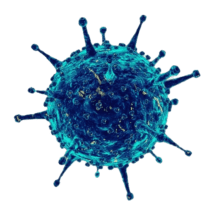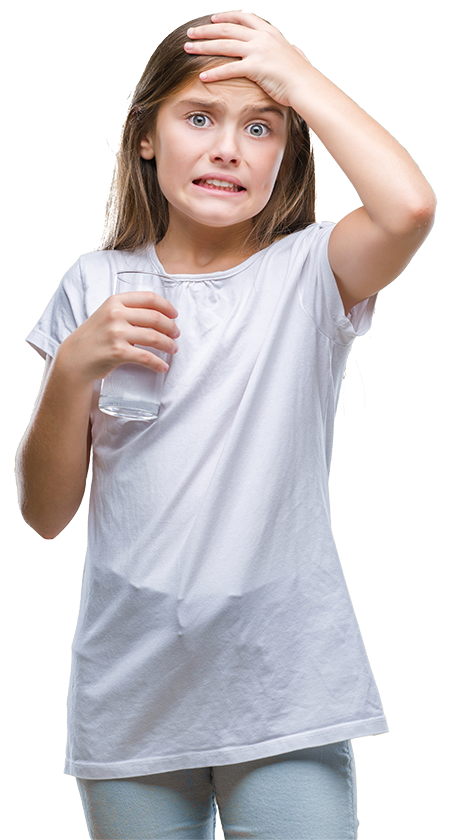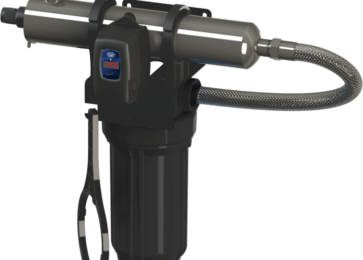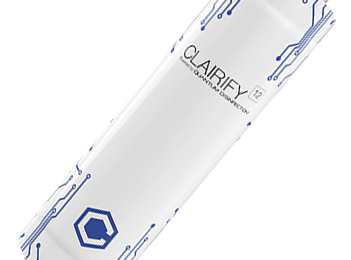
Bacteria
 OVERVIEW AND TREATMENT OPTIONS:
OVERVIEW AND TREATMENT OPTIONS:
There are a wide range of living microorganisms that thrive in water sources such as protozoa, viruses, bacteria, E.coli, and Giardia to name a few. While a large portion of the United States get their water from a municipal treatment plant where disinfectants have been added to kill biological contaminants, private water sources can become contaminated as well. Many of these microorganisms may make you extremely ill. This is why it’s extremely important to have your water tested annually. By testing the level of coliform in your water, it can be a strong indicator that it may be contaminated with other pathogens.
 SOURCES
SOURCES
Well water contamination is usually caused when surface water picks up bacteria from the ground and runs off into your well through a defect in the well casing. Coliform bacteria is commonly detected after heavy rains and hurricanes due to the excessive runoff of rain water. Improperly sealed wells can also allow sewage, insects, and rodents to contaminate your water supply. Fecal coliform bacteria, including E. coli are found in high amounts in the intestines and feces of people and animals. Cryptosporidium and giardia protozoa often come from surface water contaminated with the feces of wild animals, including cattle and other farm animals, cats and dogs, and wildlife. Leaky pipes and sewer connections, septic tanks that aren’t properly functioning, or problems that happen as the water travels from the water treatment plant (frozen pipes, broken lines, etc) can all allow these contaminants to get into your well water and make you sick.
HEALTH CONCERNS
Water that contains biological contaminants can be extremely dangerous. While many bacteria in water, such as E. coli, or protozoa like Cryptosporidium parvum, cause flu-like symptoms and gastrointestinal discomfort in otherwise healthy individuals, they can cause serious dehydration and even death in those who are very young, very old, or have a compromised immune system. Other far more serious illnesses can also be spread through contaminated water, including hepatitis, typhoid, cholera, and dysentery, all of which can result in severe illness or even death.
TESTING
The EPA recommends that all private wells be tested annually for total coliforms as part of a routine for drinking water. If routine water testing indicates the presence of coliform, it’s common practice to collect additional samples and repeat the tests to help determine if there is an actual problem with the water supply. Once those tests are confirmed, thoroughly inspect and test the entire water system, regardless of the source, to find the where the contamination is being introduced. Once the source is identified, it can be corrected to eliminate the contamination.
 Bacteria testing should also be done for the following:
Bacteria testing should also be done for the following:
Sudden change to water’s appearance, taste, or odor.
Private well within 50′ of septic system
Multiple household members experiencing unexplained flu-like symptoms
Private well located on a farm
After wells are drilled, fracked, or repaired.
After a submersible pump is installed or replaced.
TREATMENT
After repairs are complete, you should shock the well with chlorine pellets. Flush the system through the home until chlorine is no longer detected, and this should kill any microorganisms in the water supply. Most bacterial contamination can be treated through chlorination. If contamination is occurring regularly a water treatment specialist or a well drilling company can be called in to look for defects in your well casing. Defects could include improper sealing, crack in the casing, insufficient well casing depth, or the water source may have a low pH making it aggressive and eroding the steel itself. They could also install a CHEMICAL FEED PUMP SYSTEM. for disinfection.
Though chlorine is a reliable option for water that has serious contamination issues, we have offer creative and innovative greener solutions that may more cost effective approaches as well.
- ULTRA VIOLET DISINFECTION (UV) has been the go to technology for years now. UV energy penetrates the outer cell membrane of the microorganism, passes through the cell body and disrupts its DNA preventing reproduction. UV treatment does not alter water chemically; nothing is being added except energy. The sterilized microorganisms are not removed from the water.
- Ozone Disinfection is a technology that has been used for years in the industry because of it’s effectiveness at killing pathogens. It’s usually rather expensive as well. BWS OZ³ AERZONE uses the Sidekick Technology to bring ozone into the next level of water conditioning.
- BWS QUANTUM DISINFECTION is a new innovative technology that kills up to 99.9999% of microorganisms and bacteria in the water with no use of electricity, and adding nothing to your water.

BWS OZ3 aerZone™
BWS Ozone Filters use an OZ³ Sidekick to oxidize, clean and filter water while providing antimicrobial protection against nuisance bacteria and related odors.
LEARN MORE
BWS Ultra Violet Series
The BWSX4 system is designed to effectively treat flow rates up to 15 gpm It’s axial flow and rack systems offer the quality, flexibility, and convenience that you require for all of your residential and light commercial applications.
LEARN MORE
BWS Quantum Disinfection
Quantum Disinfection is a new innovative technology that kills up to 99.9999% of microorganisms and bacteria in the water with no use of electricity, and adding nothing to your water.
LEARN MORE